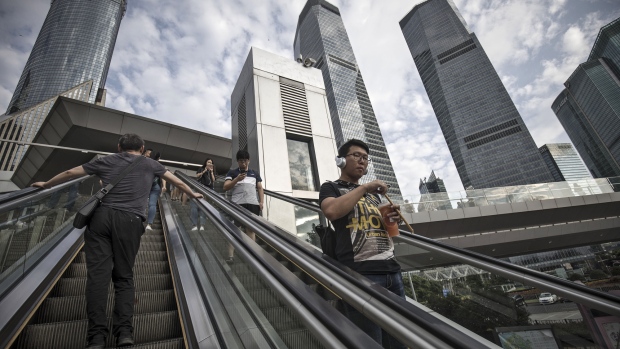Dec 6, 2018
How to Survive the Trade War If You're an American Firm in Asia
, Bloomberg News

(Bloomberg) -- U.S. firms operating in Asia are adapting to global trade uncertainty with a range of survival tactics, from re-branding products to tweaking their supply chains.
“All of the tools in the toolbox are being utilized,” said Cindy Owens, an associate at law firm Baker McKenzie Wong & Leow and member of trade group AmCham Singapore. Her clients are pursuing a lot of “nuts and bolts” solutions as some of the bigger-picture questions remain unresolved, she said.
Gerry Mattios, executive vice president at consultancy firm Bain & Co. Inc. in Southeast Asia and also an AmCham member, says firms are tinkering around the edges to ease the negative impact of U.S. and Chinese tariffs. Judging by somewhat benign U.S. consumer inflation, firms have managed to absorb the extra costs or pass them on to parts of their supply chain, Mattios said.
Owens and Mattios spoke after the release of a report surveying the trade-war impact on Singapore’s AmCham members. The results showed that about half of firms are delaying or canceling investment decisions.
As polling and politics suggest more of a wait-and-see mode, many companies now have an extra reason to accelerate development plans. Owens and Mattios outlined several actions that they’re seeing firms already pursuing:
“Historically a lot of companies would let something sit in the tariff code, and if it isn’t broken, don’t fix it,” Owens said of products being wrongly labeled as technology and customs rules evolve. “But now there’s a reason to revisit that,” and some clients have found they can escape higher duties just by cleaning up their product labels.
For other firms, the trade war has offered opportunities to forge ahead on strategic plans they’ve penciled in for years, said Mattios. On a bigger scale, automation is getting a huge trade-war push. The consumer electronics industry already has shown great advances there, but the apparel and automotive parts sectors are also catching up, he said.
As for the truce forged from last weekend’s U.S.-China meetings, both Owens and Mattios agreed it doesn’t change much from a company perspective.
What could change things for the worse: if the U.S. follows through on its now-old threat to boost the tariff rate on $200 billion in Chinese goods, or if Chinese companies retaliate in new ways against American firms.
To contact the reporter on this story: Michelle Jamrisko in Singapore at mjamrisko@bloomberg.net
To contact the editors responsible for this story: Nasreen Seria at nseria@bloomberg.net, Chris Bourke
©2018 Bloomberg L.P.





